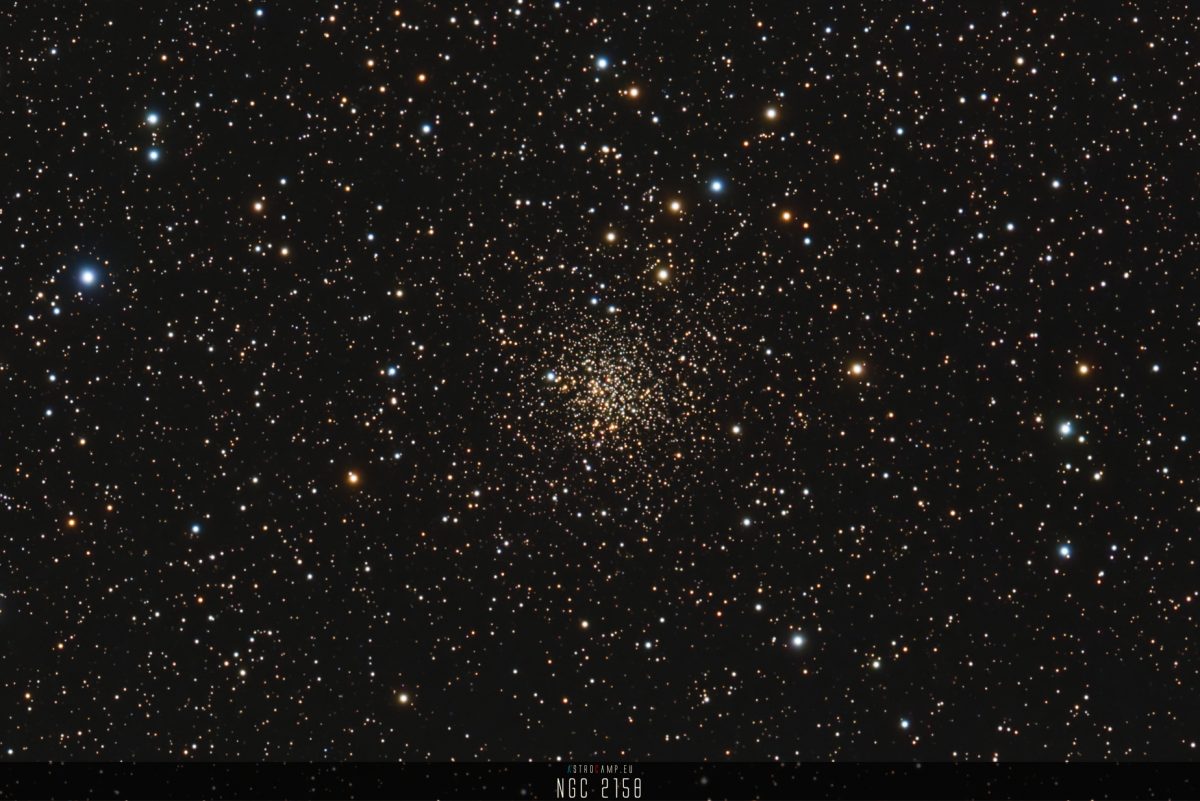NGC 2158 is an old open cluster that was once mistaken for a globular cluster due to its compact appearance. It contains over 10,000 stars and is estimated to be about 2 billion years old, making it significantly older than its nearby neighbor, Messier 35. The cluster’s stars are predominantly older, low-mass stars, creating a distinct stellar population within the Gemini constellation. NGC 2158 is a popular target for astrophotographers, often captured alongside the brighter and larger Messier 35, showcasing a striking contrast in size, density, and age between the two clusters.
Names and Catalog numbers
- NGC 2158
- Melotte 40 (Mel 40)
Position and the cosmic neighborhood
NGC 2158 is situated in the winter sky of the Northern Hemisphere, located about 15 arcminutes southwest of the much brighter and larger open cluster Messier 35. This proximity creates an excellent opportunity for astrophotographers to capture both clusters in the same field of view, highlighting their contrasting characteristics. NGC 2158 is part of the Perseus Arm of the Milky Way Galaxy and can be found near the feet of the Gemini twins, not far from the bright star Propus (Eta Geminorum).
Nice to Know
- NGC 2158 was initially misclassified as a globular cluster due to its compact and dense appearance, but it is now known to be an old open cluster.
- The cluster contains at least 97 variable stars, providing valuable data for stellar evolution studies.
- NGC 2158 is about five times farther away than Messier 35 but contains at least ten times more stars, showcasing a striking contrast in stellar density.
- The first astrophotography image including NGC 2158 alongside Messier 35 was taken on February 8th, 1893, by Isaac Roberts, marking an early milestone in cluster astrophotography.
Brightness, distance and size
NGC 2158 has an apparent magnitude of 8.6, making it a challenging but rewarding target for amateur astrophotographers. The cluster is located approximately 16,500 light-years away from Earth, significantly farther than its neighbor Messier 35. NGC 2158 has a physical diameter of about 16 light-years, which translates to an apparent size of roughly 5 arcminutes in the night sky. This relatively small apparent size, combined with its dense star concentration, makes NGC 2158 an excellent subject for telescopes with longer focal lengths, allowing astrophotographers to capture its compact nature in detail.


